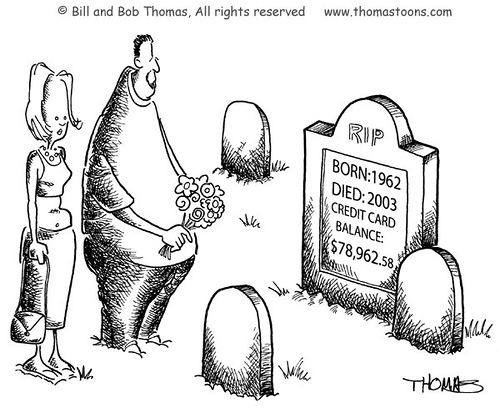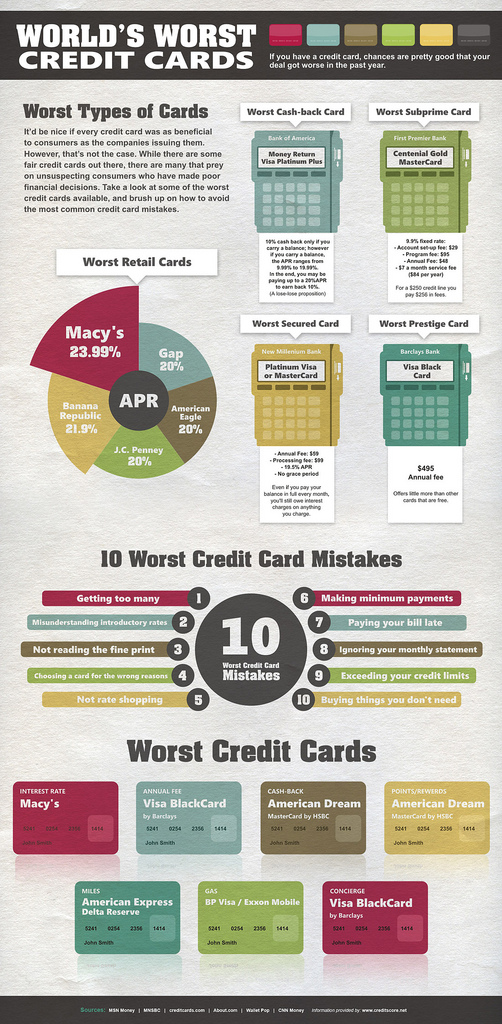The World’s Worst Credit Cards

Please note that we are not authorised to provide any investment advice. The content on this page is for information purposes only.
27 May 2011
Credit card companies are battering consumers across the board with monstrous fees, high interest rates and disappearing rewards. If you signed up for a credit card in the past year, the chances are – you’ve been ripped off. Your interest rate might have gone up, had your credit limit reduced, or your credit card issuer gutted your rewards.
27 May 2011
Credit card companies are battering consumers across the board with monstrous fees, high interest rates and disappearing rewards. If you signed up for a credit card in the past year, the chances are – you’ve been ripped off. Your interest rate might have gone up, had your credit limit reduced, or your credit card issuer gutted your rewards.
Bank of America told thousands of its cardholders in recent weeks — even those with good payment histories — that they faced a rate hike from 9 percent to as high as 28 percent if they didn’t pay off their balances at the old rate and stop using their cards. The bank, the largest credit card issuer, since its 2006 acquisition of MBNA, says it’s all part of its “periodic” review of customer credit risk, according to Forbes.
Analysts say: it’s only going to get worse. Still, you may be able to get a good deal, as long as you don’t chose these cards singled out by experts for being the world’s worst credit cards:
Table of Contents
Macy’s Card
Cards offered by retailers and specialty stores hardly offer a good deal, but Macy’s stand outs out the most.Many people apply for retail cards to get a discount on their purchases, typically 10% to 20% off. But you can often get the same benefits and a better overall deal by applying for a store card that’s affiliated with a major credit card brand.
[quote]”Almost without fail, (retail) cards charge exorbitant interest rates. The worst offender I know of is the Macy’s credit card, with its 23.99% interest rate,” McHenry said, “but cards from J.C. Penney, American Eagle Outfitters, Gap, Brooks Brothers, J. Crew and Dillard’s all come in at rates over 20%.”“If you really want a store credit card, try to get a store card associated with Visa, MasterCard or American Express — those cards generally have interest rates lower than the store-only credit cards,” McHenry said. “For example, I just got a Banana Republic Visa with an interest rate of 14.24%. Compare that to Banana Republic’s store-only card, which charges a rate of 21.9%.” – MSN Money [/quote]
Inforgraphic: Gerardo Obeita
[break]The Worst Cash-Back Card
The Money Return Visa Platinum Plus: ff you pay your balance in full, cards that offer cash rebates are usually a terrific deal.
Not this one.
The terms look sweet at first: no annual fee, 0% for six months on balance transfers and a whopping 10% cash rebate.
You get the 10% cash back, however, only if you carry a balance. And the annual percentage rate for carrying a balance ranges from 9.99% to 19.99%.
Find the Best Cash Back Credit Cards on EconomyWatch
The Worst Secured Card
- New Millennium Bank Secured Gold Visa or MasterCard
- New Millennium Bank Secured Platinum Visa or MasterCard
Secured cards, which offer credit lines equal to the deposits made by borrowers, will likely become a better option than subprime cards as lenders flee the subprime market.
Just make sure to pick a secured card other than these.
Find the Best Secured Credit Cards on EconomyWatch
Do you have one of these bad credit cards? If you think you have it bad, here’s the card that really takes the cake: The Continental Finance MasterCard. After all the fees have been collected, it has a credit limit of $53 (out of $300):
And to make matters worse: if you use this card to repair your credit history you’re stuck with it because canceling the account will shorten your credit history and drop your score.





